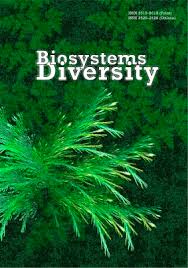Comparison of commonly used ecological scales with the Belgard Plant Ecomorph System
Comparison of commonly used ecological scales with the Belgard Plant Ecomorph System
Author(s): B. A. Baranovski, N. Roschina, L. Karmyzova, I. IvankoSubject(s): Evaluation research, Human Ecology, Environmental interactions
Published by: Дніпропетровський національний університет імені Олеся Гончара
Keywords: ecological scales; environmental factors; habitats; heliomorphs; hygromorphs; trophomorphs; halomorphs; cenomorphs; ecomorphic analysis;
Summary/Abstract: There are several ecological scales developed both for phytoindication of ecological factors and plant ecomorphs. Among them, the scales of Ellenberg and Tsyganov are the most commonly used. L. G. Ramensky and P. S. Pogrebnyak had developed a phytoindication method; they also were founders of first ecological scale of plant species in relation to various environmental factors. One of first ecomorph systems was developed by Alexander Lyutsianovich Belgard. In 1947, Belgard presented a tabular ecomorph system in his doctoral dissertation, and later in monograph “Forest vegetation of the South-East of Ukraine”. In the system he used abbreviated Latin names applying terminology proposed in the late 19th century by Dekandol, Warmin and other authors. He considered ecomorphs as adaptations of plants to environmental conditions in forests of the steppe zone of Ukraine where forest cenoses are exposed to processes of steppization, prairification, swamping, salinization, and thus clarification of relationships between forest, meadow, steppe, marsh and weed plant species was essential.
Journal: Biosystems Diversity
- Issue Year: 26/2018
- Issue No: 4
- Page Range: 286-291
- Page Count: 6
- Language: English

